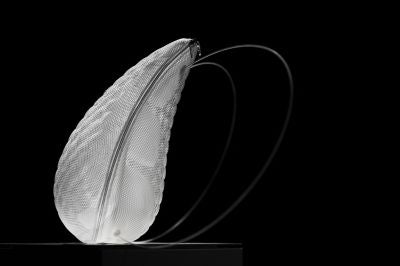Your support helps us to tell the story
From reproductive rights to climate change to Big Tech, The Independent is on the ground when the story is developing. Whether it's investigating the financials of Elon Musk's pro-Trump PAC or producing our latest documentary, 'The A Word', which shines a light on the American women fighting for reproductive rights, we know how important it is to parse out the facts from the messaging.
At such a critical moment in US history, we need reporters on the ground. Your donation allows us to keep sending journalists to speak to both sides of the story.
The Independent is trusted by Americans across the entire political spectrum. And unlike many other quality news outlets, we choose not to lock Americans out of our reporting and analysis with paywalls. We believe quality journalism should be available to everyone, paid for by those who can afford it.
Your support makes all the difference.The newly opened Holon Design Museum in Israel has announced its second exhibition: Senseware, featuring works of Shigeru Ban, Ross Lovegrove, Gwenaël Nicholas and Kengo Kuma, a display which proved very popular during last year's Triennale in Milan.
Senseware's concept is to pair designers with Japan's leading synthetic fabric and textile manufacturers to create pieces which demonstrate the materials' potential applications. Exhibitors were selected from the fields of architecture, interior design, product design and fashion.
Galit Gaon, the museum's creative director, explained: "The exhibition is shaped by a unique collaboration between the curator, participating designers and new materials, giving rise to the creation of a ‘new artificial nature,'" and she added that the objects have "human and emotional qualities and have been created to communicate with users in an unprecedented manner."
French architect Gwenaël Nicholas's Mist Bench, for instance, was woven from the optical fibre ESKA, which responds to a visitor's movement by glowing. Other objects on display include Japanese architect Shigeru Ban's ultra-light chairs made from carbon fiber or British industrial designer Ross Lovegrove's organic backpacks, called Seeds of Love, made from so-called Triaxial Woven Fabric (T.W.F), enabling "dynamic surface changes."
Senseware - on show from June 25 to September 4 - is part of the Tokyo Fiber series of exhibitions, which was launched three years ago to present the potential power of Japan's fiber industry.

Join our commenting forum
Join thought-provoking conversations, follow other Independent readers and see their replies
Comments